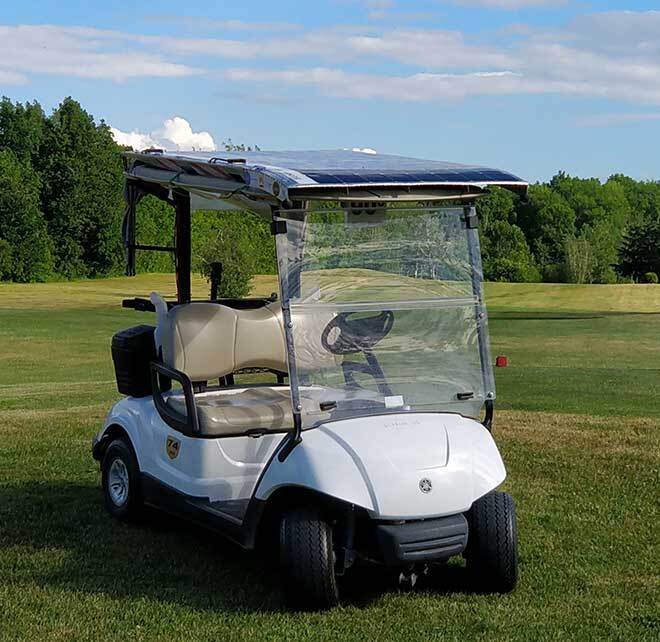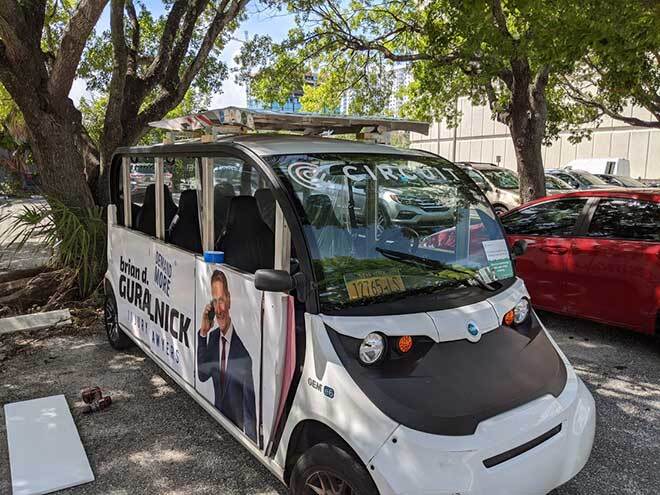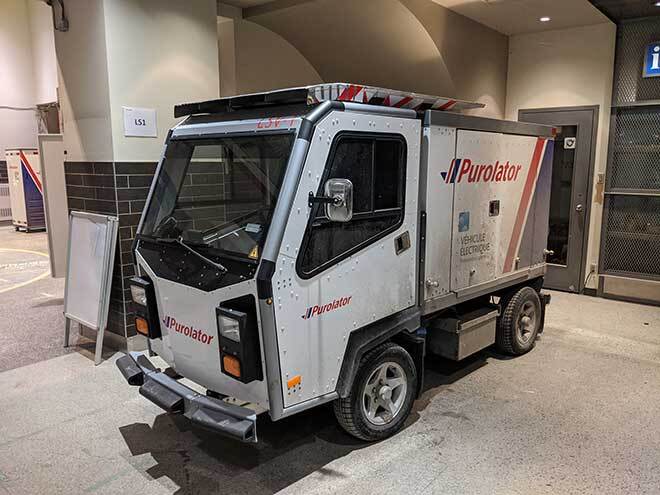Increasing the Range of Low-Speed Electric Vehicles

@CAPSolar. All rights reserved.
Sustainable mobility includes several solutions: reduced travel, public transit, active transportation, electric cars, etc. A lesser-known solution in North America is the low-speed electric vehicle (LSV), a small 100% urban electric vehicle with a maximum speed of around 35 km/h. It consumes very little energy and is well suited for short-distance travel. CAPSolar, a start-up company in the Centech hub, plans to increase the range of these vehicles by harnessing solar energy.
Successful Preliminary Tests
Commercial solar panels were coupled with non-optimized MPPT charge controllers and installed on the roof of three LSVs: a Yamaha Drive golf cart (7.56 kWh 48-V AGM battery; 2.6 kW motor), a Polaris GEM E6 (12.56 kWh 48-V AGM battery; 6.5 kW motor) and a Kargo EV (15.84 kWh 48-V battery; 6 kW motor). The preliminary tests, carried out under different conditions, demonstrated the feasibility of the concept and have aroused interest from industrial partners in the project. CAPSolar members are now developing a new prototype with customized solar PV panels and an optimized charge controller designed specifically for this application. With this new prototype, they expect a 15–20% increase in range, depending on vehicle size and battery capacity, as well as a longer battery life.

Yamaha Drive golf cart used in preliminary testing
Toward a More Efficient Prototype
When analyzing the data collected during the preliminary tests, CAPSolar members estimated that about 66% of the solar panel’s production capacity was lost. The residential solar panel used in the tests, designed for static applications, was one cause of this huge loss. This is because standard solar panels are designed to be installed in a fixed, unshaded location and oriented to maximize the angle of incidence of the sun’s rays. The CAPSolar team partnered with the Aero-Thermo-Mechanics Research Laboratory of the Université Libre de Bruxelles and Soltech, a solar panel manufacturer, to design new solar panels that can accommodate the changing sunlight conditions of the application. However, the key to increasing efficiency lies in optimizing the charge controller.

Polaris Model GEM E6 used in preliminary testing
A New Paradigm in Charge Controllers
Conventional solar applications are designed to produce the energy required to meet the power demand of a load. Most charge controllers on the market therefore adapt a high voltage to a lower voltage, which is suitable for the batteries, thus maximizing the charging voltage. CAPSolar’s load control project is based on a completely different paradigm: the solar panels produce only a limited portion of the power consumed by the car’s engine. In a way, they allow the battery to discharge more slowly. The challenge here is to properly optimize the energy transfer from the panels, while maximizing their production and protecting the battery pack from overloads or deep discharges in order to increase their lifespan. This type of application differs from what is out there at the moment.
Optimizing the charge controller was entrusted to the t3e-Industrial Research Group in Technologies of Energy and Energy Efficiency at ÉTS, headed by Professor Daniel R. Rousse. The developed technology, in addition to increasing the attractiveness of LSVs for short-distance travel, will pave the way to other solar applications.

Kargo EV used during preliminary testing


